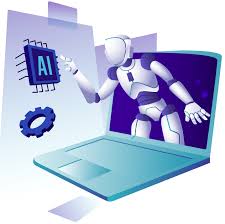AI chatbots have become essential tools for businesses looking to improve customer service, streamline operations, and automate repetitive tasks. To unlock their full potential, it’s crucial to properly train AI chatbots to ensure they provide accurate and helpful responses. In this guide, we will walk through the process of training AI chatbots, focusing on key steps to enhance their effectiveness and improve customer interactions.
What Does It Mean to Train AI Chatbots?
Training an AI chatbot involves teaching it to understand, interpret, and respond to human queries in a way that feels natural and effective. By feeding the chatbot data and refining its responses, the chatbot learns to improve its accuracy and performance over time through machine learning (ML) and natural language processing (NLP).
A well-trained chatbot should be able to:
-
Understand customer queries with high accuracy and provide relevant, precise, and actionable responses.
-
Learn from past interactions and handle multiple conversations simultaneously without losing quality.
Step 1: Define Your Chatbot’s Purpose
The first step to train AI chatbots is to clearly define the chatbot’s purpose and scope. This will guide the data collection and training process to ensure the chatbot is tailored to meet specific business needs. Consider the following questions:
-
What is the primary function of the chatbot?
-
Who is the target audience?
-
What types of questions or tasks will the chatbot need to handle?
Defining the chatbot’s role will help you design the appropriate training data and optimize its performance for specific use cases.
Step 2: Collect and Prepare Training Data
AI chatbots are only as good as the data used to train them. Gathering high-quality and relevant data is essential to ensure the chatbot can understand and respond effectively. The data used for training can include:
-
-
Website content and uploaded documents: Use existing content from your website, FAQs, manuals, and customer service guides to familiarize the chatbot with common queries.
-
Historical customer interactions and open-source datasets: Leverage chat logs, emails, customer support records, and general conversational datasets to help the chatbot handle diverse questions effectively.
-
Once the data is collected, it’s important to organize and structure it so that the chatbot can access it efficiently during training.
Step 3: Implement Natural Language Processing (NLP)
NLP is a critical component of training AI chatbots, as it enables the system to understand human language. NLP allows the chatbot to interpret user input, detect the intent behind queries, and generate appropriate responses. Key features of NLP in chatbot training include:
-
-
Recognizing keywords and user intent: Helps the chatbot identify the main purpose of a user’s query.
-
Analyzing sentiment: Allows the chatbot to adjust its tone and responses based on user emotions, such as frustration.
Many modern AI platforms incorporate NLP technology, making it easier for businesses to train chatbots that effectively process and understand human language. -
Step 4: Train Your Chatbot Using Machine Learning Models
Machine learning is key to chatbot development, enabling continuous improvement. Models used include:
-
Supervised Learning: Trains the chatbot with labeled data and predefined answers.
-
Unsupervised Learning: Helps the chatbot identify patterns and refine responses.
-
Reinforcement Learning: The chatbot adapts based on feedback to improve performance.
Regular retraining with fresh data keeps the chatbot responsive to user needs.
Step 5: Test and Refine the Chatbot
After initial training, testing the chatbot’s performance is crucial. This includes:
-
User Testing: Simulate real interactions to assess responses.
-
Performance Monitoring: Track accuracy, relevance, and speed in live chats.
-
Feedback Loops: Gather user feedback for improvements.
Testing helps identify weaknesses and optimize the chatbot further.
Step 6: Continuously Update and Improve the Chatbot
AI chatbots need continuous updates to stay relevant. Key maintenance steps include:
-
Regular Data Updates: Add new customer queries and feedback.
-
Error Handling: Address gaps in understanding or responses.
-
Fine-Tuning: Adjust settings to improve accuracy and personalization.
Ongoing refinement ensures the chatbot remains a valuable asset.
Conclusion
Training AI chatbots is an ongoing process that requires a clear understanding of the chatbot’s purpose, careful data preparation, and the implementation of advanced technologies like NLP and machine learning. Regular testing and updates are essential to ensure that the chatbot remains effective in delivering relevant, personalized, and accurate responses.
By investing time in proper training, businesses can develop AI chatbots that significantly enhance customer service, automate key tasks, and improve operational efficiency.

